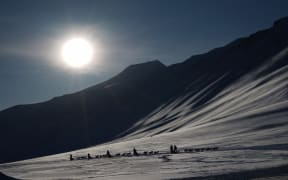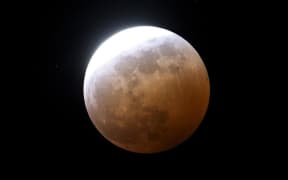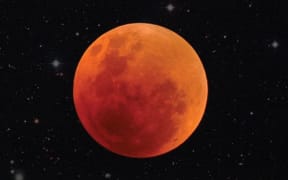A solar eclipse has provided a spectacular sight for some across northern Europe and in remote Arctic islands, though many were left disappointed with cloudy skies blocking views.
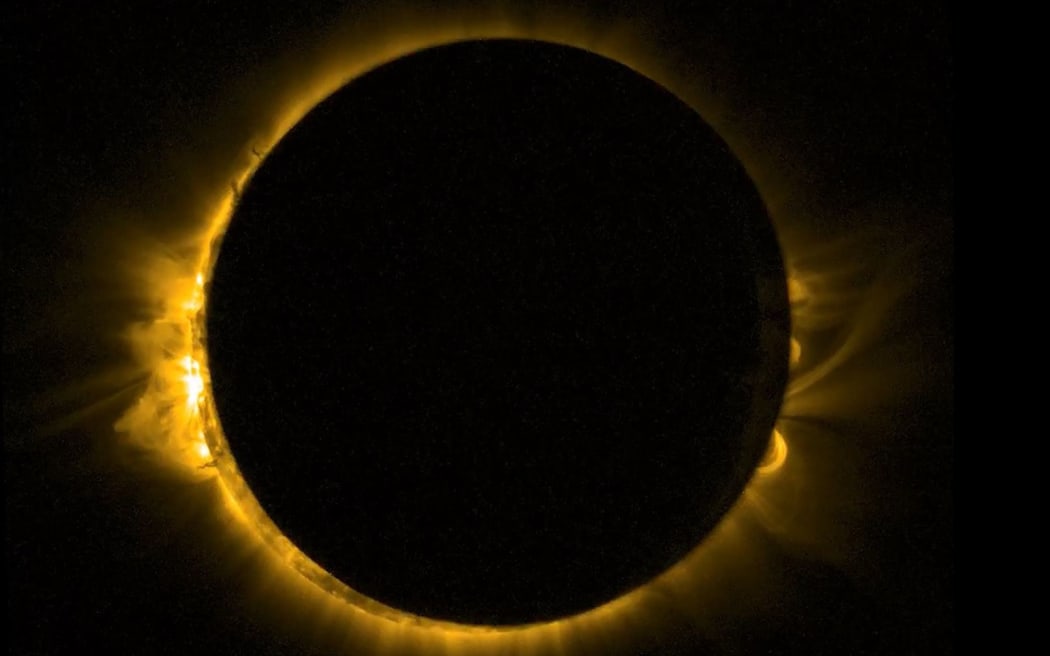
The solar eclipse captured by ESA’s Sun-watching Proba-2 mini-satellite. Photo: AFP / ESA / ROB
Millions waited in Europe, as well as parts of Africa and Asia, where a partial eclipse was visible.
A full eclipse could be viewed from the remote archipelagos of Svalbard and the Faroe Islands, where observers were plunged into daytime darkness for more than two minutes.
The phenomenon occurs when the moon totally or partially blocks out the sun.
Many professional and amateur astronomers positioned themselves in the Faroe Islands, where the capital city of Torshavn got totality for a full two minutes.
And those who could not book a flight or a hotel for the Faroes went to Svalbard, where the capital city of Longyearbyen witnessed two and a half minutes of totality.
Irrespective of the cloud cover, scientists said citizens could still help them with their research.
A University of Reading team wants to learn more about how the atmosphere behaves as the Moon's shadow runs over the Earth.
The National Eclipse Weather Experiment (NEWEx) in the UK asked people to record conditions at their locality.
Professor Giles Harrison explained: "This is the first big partial eclipse to happen in the UK since 1999, and the next one isn't until August 2026, so this is a once-in-a-generation opportunity.
"By observing what happens on Friday we are effectively turning the skies of Britain into a giant weather lab, giving us a rare chance to see what happens when you 'turn down the Sun'.
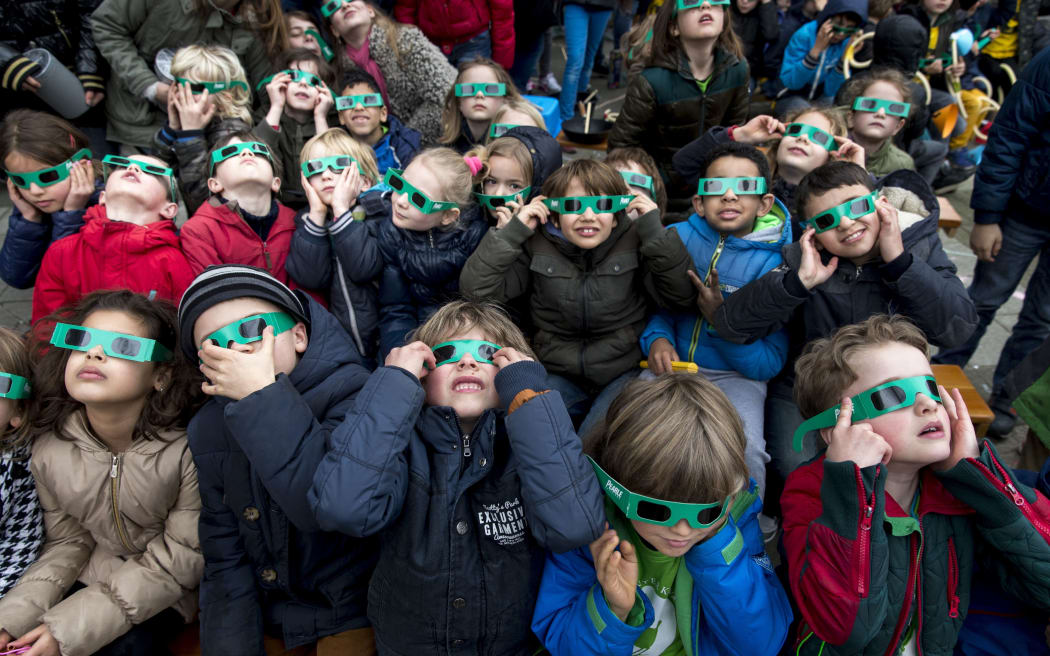
School children wear protective eye gear to watch a partial solar eclipse from their school yard in Amsterdam. Photo: AFP
"This will give us a precious insight into how the Sun influences the clouds and wind, as well as more obvious effects, such as temperature.
"By improving our understanding of how the weather works, we're better able to predict it, meaning scientists can further improve weather forecasts."
One phenomenon the experiment hopes to investigate is the "eclipse wind". This refers to changes in the breeze that eclipse observers have reported as darkness falls.
Oxford University scientists, meanwhile, are using the event to try to understand how eclipses affect electricity grids.
The deep shadow will have reduced the output from solar panels, which now supply a significant proportion of power needs right across Europe.
The researchers will look to see how this dip in performance impacted the stability of grid networks.
Next year will have a total solar eclipse, too.
That will occur on 9 March, and will cross Sumatra, Borneo, Sulawesi, and extend out over the Pacific.
- BBC & ABC
